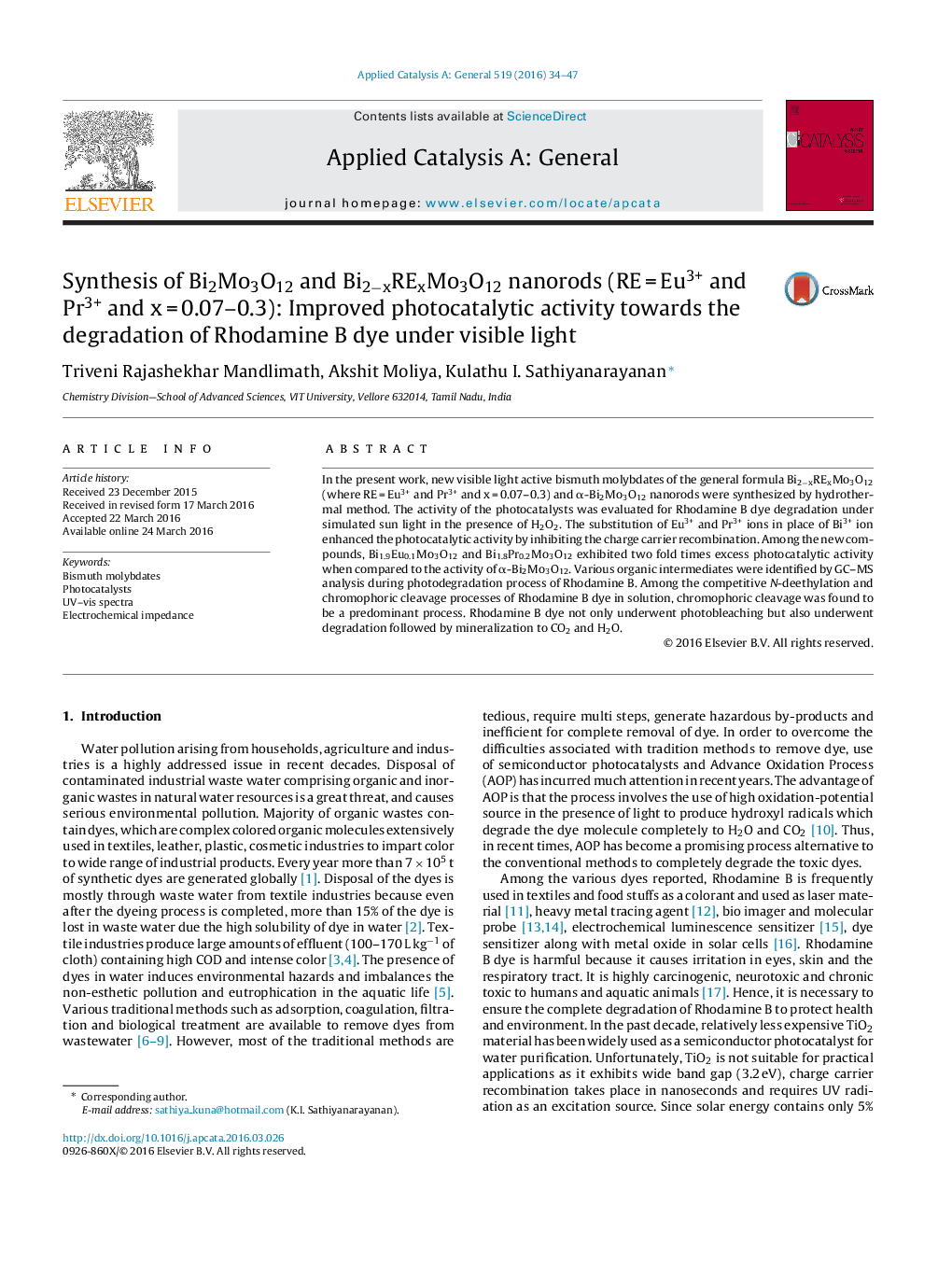| Article ID | Journal | Published Year | Pages | File Type |
|---|---|---|---|---|
| 38896 | Applied Catalysis A: General | 2016 | 14 Pages |
•New Bi2−xRExMo3O12 (RE = Eu3+ and Pr3+: x = 0.07–0.3) nanorods were developed.•Visible light active materials were tested for photodegradation of Rhodamine B.•Bi1.9Eu0.1Mo3O12 and Bi1.8Pr0.2Mo3O12 exhibited two fold times excess photocatalytic activity than α-Bi2Mo3O12.•GC–MS analysis confirmed the complete mineralization of Rhodamine B.
In the present work, new visible light active bismuth molybdates of the general formula Bi2−xRExMo3O12 (where RE = Eu3+ and Pr3+ and x = 0.07–0.3) and α-Bi2Mo3O12 nanorods were synthesized by hydrothermal method. The activity of the photocatalysts was evaluated for Rhodamine B dye degradation under simulated sun light in the presence of H2O2. The substitution of Eu3+ and Pr3+ ions in place of Bi3+ ion enhanced the photocatalytic activity by inhibiting the charge carrier recombination. Among the new compounds, Bi1.9Eu0.1Mo3O12 and Bi1.8Pr0.2Mo3O12 exhibited two fold times excess photocatalytic activity when compared to the activity of α-Bi2Mo3O12. Various organic intermediates were identified by GC–MS analysis during photodegradation process of Rhodamine B. Among the competitive N-deethylation and chromophoric cleavage processes of Rhodamine B dye in solution, chromophoric cleavage was found to be a predominant process. Rhodamine B dye not only underwent photobleaching but also underwent degradation followed by mineralization to CO2 and H2O.
Graphical abstractFigure optionsDownload full-size imageDownload high-quality image (86 K)Download as PowerPoint slide
